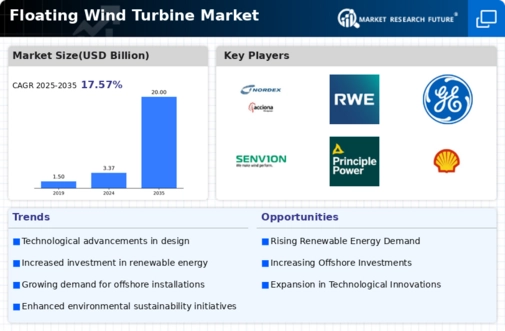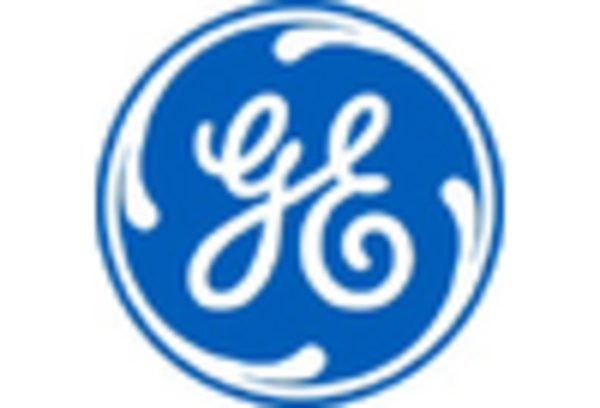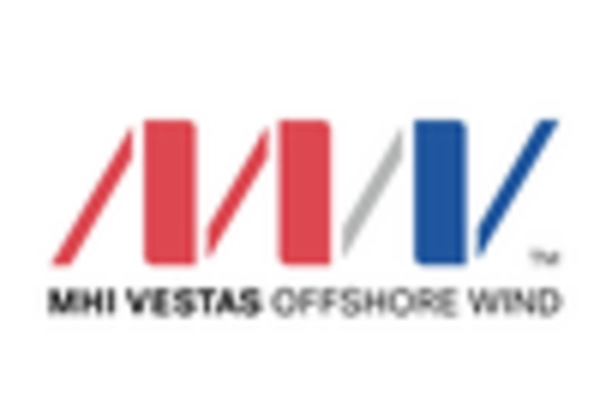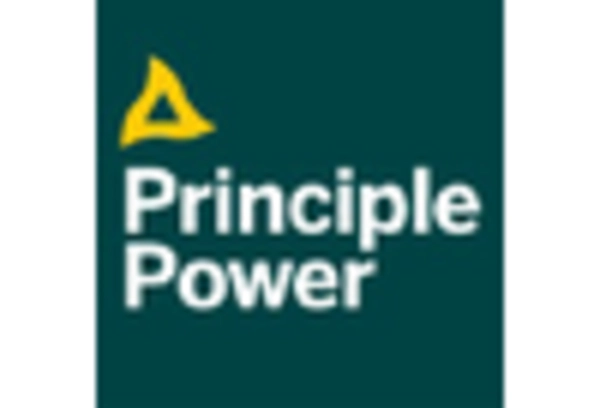The Floating Wind Turbine Market is currently characterized by a dynamic competitive landscape, driven by the increasing demand for renewable energy and the need for sustainable solutions to combat climate change. Key players such as Equinor (NO), Ørsted (DK), and Siemens Gamesa (ES) are at the forefront, each adopting distinct strategies to enhance their market positioning. Equinor (NO) focuses on innovation and technological advancements, particularly in floating wind technology, while Ørsted (DK) emphasizes strategic partnerships and regional expansion to bolster its project portfolio. Siemens Gamesa (ES) is leveraging its expertise in turbine manufacturing and digital transformation to optimize operational efficiency, thereby shaping a competitive environment that is increasingly reliant on technological prowess and strategic collaborations.
In terms of business tactics, companies are localizing manufacturing and optimizing supply chains to enhance operational efficiency and reduce costs. The market structure appears moderately fragmented, with several key players exerting influence over their respective segments. This fragmentation allows for a diverse range of strategies, as companies seek to differentiate themselves through innovation and localized solutions, thereby collectively shaping the competitive dynamics of the market.
In November 2025, Ørsted (DK) announced a groundbreaking partnership with a leading technology firm to develop advanced predictive maintenance solutions for floating wind turbines. This strategic move is likely to enhance operational reliability and reduce downtime, thereby improving overall project economics. Such initiatives underscore Ørsted's commitment to leveraging technology to optimize performance and maintain its competitive edge in the market.
In October 2025, Siemens Gamesa (ES) unveiled a new floating wind turbine prototype designed to operate in deeper waters, which could potentially unlock new markets previously deemed unfeasible. This innovation not only reflects Siemens Gamesa's focus on R&D but also positions the company to capitalize on emerging opportunities in regions with high wind potential, thus reinforcing its market presence.
In December 2025, Equinor (NO) secured a significant contract for a floating wind farm project off the coast of Scotland, marking a pivotal expansion in its operational footprint. This project is expected to contribute substantially to the company's renewable energy portfolio and demonstrates Equinor's strategic focus on scaling up its floating wind capabilities in response to growing global demand.
As of December 2025, the competitive trends in the Floating Wind Turbine Market are increasingly defined by digitalization, sustainability, and the integration of AI technologies. Strategic alliances are becoming more prevalent, as companies recognize the value of collaboration in enhancing innovation and operational efficiency. Looking ahead, competitive differentiation is likely to evolve from traditional price-based competition to a focus on technological innovation, supply chain reliability, and sustainable practices, thereby reshaping the market landscape.

















Leave a Comment